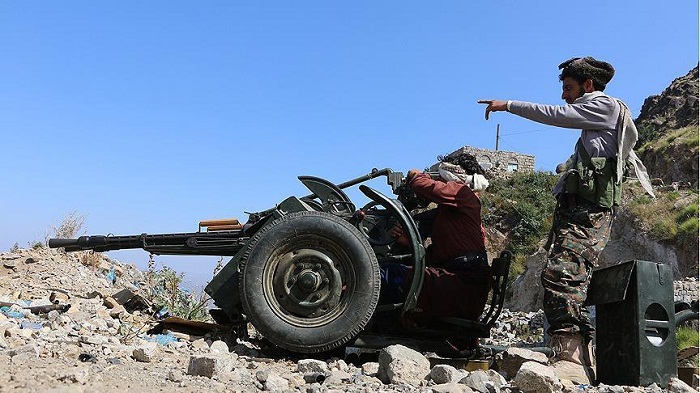Both sides agreed, however, to begin a fresh round of talks on Jan. 14 in hopes of ending the ongoing conflict, which over the course of the last 10 months has claimed thousands of civilian lives.
Yemen has remained in turmoil since September of last year, when the Houthis overran capital Sanaa and other parts of the country, forcing President Abd Rabbu Mansur Hadi and his government to take up temporary residence in Saudi Arabia.
Although Hadi has since returned to Yemen, fighting continues to rage in several parts of the country between the Houthis and their allies on one hand and Saudi-backed pro-Hadi forces on the other.
Ongoing violence
On Sunday, pro-Hadi forces announced the capture of three strategic areas of Yemen’s northern Al-Jawf province following fierce clashes with Houthi fighters.
One local pro-Hadi source told Anadolu Agency on condition of anonymity that the army and members of Yemen’s pro-Hadi "resistance" had taken three positions in Al-Jawf’s Wadi-Wasat region after fierce fighting, which, he said, had left five Houthi militiamen dead.
The assertion comes two days after pro-Hadi forces announced the capture of the city of Al-Hazm, Al-Jawf’s provincial capital.
Meanwhile, Houthi spokesmen said the group had successfully carried out missile attacks on a government headquarters in the central Maarib province and on Saudi troop concentrations near the Al-Tawal border crossing.
The Houthi-linked Al-Maseera television channel reported on Sunday that Houthi militiamen had fired two "Qahir-1" missiles at a pro-Hadi military headquarters, and another at a concentration of Saudi-led coalition troops near Yemen’s border with Saudi Arabia.
The "Qahir-1" is a Russian-made missile, which the Houthis claim to have upgraded to strike targets at a distance of 300 kilometers.
"The missiles struck their targets with considerable accuracy, leaving dozens dead and wounded and a number of Apache helicopters destroyed," the television channel reported.
Local residents in Maarib, however, who reported hearing loud explosions, said the missiles had been intercepted by a missile defense system set up by the Saudi-led coalition.
There have also been conflicting reports as to where exactly the missiles were fired from.
While some witnesses told Anadolu Agency that they were launched from Yemen’s western Al-Hudayda province, others say they originated in the Hamadan area northwest of Sanaa.
The latter support their claims by noting that Hamadan was subjected to fierce airstrikes by Saudi-led coalition warplanes following the reported missile attacks.
In recent days, the Houthis and pro-Hadi forces have traded missile fire in several areas, despite the announcement in mid-December of a seven-day humanitarian ceasefire -- the third such truce since the conflict began.
In March, Saudi Arabia and its Arab allies began an extensive military campaign -- involving both airstrikes and ground operations -- aimed at reversing Houthi gains in Yemen and restoring Hadi’s government.
In the almost ten months since, some 6,000 Yemeni civilians have been killed and some 2.4 million internally displaced as a direct result of the ongoing conflict, according to UN figures.
More about:
















































